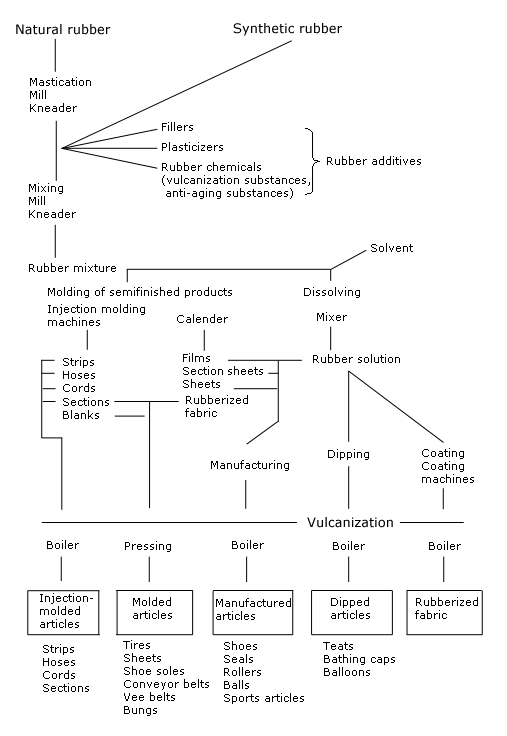| Natural rubber Version 1.0.0.05 |
[German version] |
Table of contents |
|
| General: | ||
| Product information | ||
| Packaging | ||
| Transport | ||
| Container transport | ||
| Cargo securing | ||
Product information
Product name
| German | Naturkautschuk |
| English | Natural rubber (NR) |
| French | Caoutchouc naturel |
| Spanish | Caucho natural |
| CN/HS number * | 4001 ff. |
(* EU Combined Nomenclature/Harmonized System)
Product description
Rubber is a collective term for macromolecular substances of natural or synthetic origin (natural rubber or synthetic rubber).
Natural rubber (abbreviated to NR) primarily comprises polyisoprene and is harvested from the milky white latex of a number of species of plants which flourish in the tropics, above all from the Spurge family (Euphorbiaceae). The rubber tree (Hevea brasiliensis) has achieved considerable commercial importance. The tree is native to the Amazon region and is now cultivated in virtually all tropical regions of South America, Africa and Asia. 90% of the world’s production of natural rubber is harvested from the rubber tree.
A diagonal incision is made in the bark, allowing the latex to exude. The latex has approximately the following composition:
| Constituents | Percentage |
| Water | 55…70 |
| Rubber | 30…40 |
| Resins | 1.5…2 |
| Protein | 1.5…3 |
| Ash | 0.5…1 |
| Sugar | 1…2 |
The latex, which is rich in rubber, can be preserved by adding ammonia and for special purposes it can be transported to the countries in which it is processed as latex concentrate in liquid form. This is done in barrels or in tank containers. It is far more common to filter the harvested latex, dilute it with water and then to cause it to coagulate using substances such as acetic acid or formic acid or by means of electrophoresis. This separates the raw natural rubber from the water, forming a solid mass (coagulum) that is then further processed. Coagulation can also take place in the form of auto-coagulation on the tapping panel (tree lace) and the collection cups (shell scrap and cup lumps). Such coagulum has a greater degree of contamination, and is hence used in the natural rubber grades which have less stringent requirements with respect to contamination.
A distinction is drawn between the following forms of natural rubber:
| Crepes | |
| Pale crepe rubber is among the highest quality crepes. Coagulation of this high-quality natural rubber is achieved with sodium hydrogen sulfite (NaHSO3). The clean coagulum is washed and milled. This produces sheets between 1.2 and 1.5 mm thick and 24 cm wide. The washing process removes from the coagulum considerable amounts of the serum constituents which can cause rotting. The sheets are dried in drying rooms for 2.5 to 4 days at 37°C or air-dried for 5 to 10 days on drying floors. Excessive temperatures lead to discolored patches in the sheets as a result of oxidation. The sheets are packed as bales and marketed as "thin pale crepe". The 10-mm crepe from Sri Lanka is marketed as "thick pale crepe". |
| Sheets | ||
| Two different types of sheets are distinguished: | ||
| ADS (air dried sheets) Air dried sheets are less common. They have an appearance similar to RSS (ribbed smoked sheets), but are more transparent, as they are manufactured in smoke-free rooms. |
||
| RSS (ribbed smoked sheets) (see Figure 1) The fresh latex is diluted to a rubber content of 15 – 16% and coagulated in coagulation tanks using formic acid or acetic acid. Lumps of coagulum are formed after the acid has acted for 3-4 hours. After milling and washing, sheets between 2.5 and 3.5 mm thick, 24 cm wide and 90 or 135 cm in length are produced. The final mill is an embossed mill, which gives the sheets their ribbed structure. Since these rubber sheets are not washed as intensively as crepes, they contain a higher proportion of serum constituents which encourage mold and rotting. For this reason, the sheets undergo an additional preservation process in which they are smoked in smokehouses. The sheets are hung in the smokehouses and dried for a week at temperatures up to 60°C. The smoke resulting from burning Hevea (rubber tree) wood and other organic materials such as coconut husks preserves the sheets. The specific smell of these sheets is caused by the materials used to produce the smoke. The sheets are pressed into bales and wrapped in protective sheets. The surface is protected from oxidation by application of a bale coating solution and talcum. 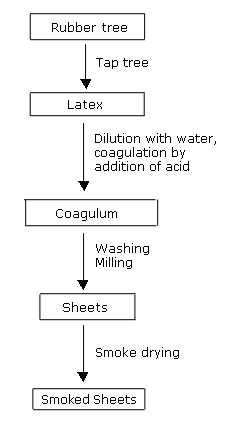 Figure 1: Manufacture of ribbed smoked sheets |
||
| Technically specified natural rubber (TSR) – Standard rubber | |||||||||
| TSRs are divided into a number of grades which are laid down in technical specifications drafted by ISO and are manufactured using new processing techniques. Depending on the TSR quality, different forms of coagulum are used: latex coagulated naturally in the collecting cups (cup lumps), rubber sheets or latex coagulated by adding acid. Different methods are used to produce TSRs, e.g. the Heveacrumb or Dynat processes. In the Heveacrumb process, rubber coagulum is passed through creping rolls set at friction speed and the shear forces involved tear the coagulum into small pieces. This process is described as crumbling. The Dynat process primarily uses cup lumps. After natural coagulation or acid coagulation, the rubber is granulated by means of a rotary knife cutter. After granulation, the crumb is washed and dried at elevated temperature up to 140ºC. Then the crumbs are compressed into blocks of about 33 1/3 kg, wrapped in synthetic plastic sheeting (high-quality polyethylene bags) and packaged in wooden or steel chests. [69] The advantages of Technically Specified Rubbers over the conventional sheet and crepe grades of rubbers are as follows:
|
| Preserved latex concentrates | |
| Ammonia is added to the latex to keep it liquid, and this is concentrated either by creaming or centrifuging. The resulting concentrate can be transported as a liquid. Depending on the quantity of ammonia added, a distinction is made between high-ammonia latex (HA) with 0.60 – 0.80 % ammonia and low-ammonia latex (LA) with 0.20 – 0.29 % ammonia. |
Latex can be processed to make other raw rubber products:
| Skim rubber | |
| Skim rubber is produced from skim latex. Skim latex is produced as a byproduct during the preparation of latex concentrate. It has a dry rubber content of only 3 to 7%. However, it also has a very low dirt content. Coagulation of skim latex can be either spontaneous or by acid treatment. It is important that the ammonia content is kept as low as possible. Further processing is the same as for smoked sheet. [69] |
| Rubber powder | |
| In order to reduce transportation costs, the latex can be converted to a fine rubber powder instead of transporting it in the form of latex concentrates. This is done by atomizing the latex and drying it with hot air. This form of rubber can be kept for long periods and is particularly resilient. |
Quality/Duration of storage
| Crepes | ||
| In addition to the high quality thick and thin pale crepes, there are further categories which are made from high-grade rubber scrap (field coagulum), e.g.: | ||
| Estae brown crepe | ||
| Thin brown crepe (remills) | ||
| Thick blanket crepe (ambers) | ||
| Flat bark crepe | ||
| Smoked blanket crepe | ||
| Sheets | |
| Ribbed smoked sheets are graded on the basis of visual assessments (RSS IX, RSS 1, RSS 2, RSS 3, RSS 4 and RSS 5). The grades have been described in the Green Book, published by the International Rubber Quality and Packing Conference. Prior to grading, the sheets are separated and inspected. Oxidized spots or streaks, weak, heated, under-cured, oversmoked, opaque and burnt sheets are not permissible. RSS IX is the top grade. The rubber must be provided by the producer in an excellent drying quality. The rubber must be dry, clean, strong, sound and evenly smoked and free from blemishes, specks, rust, blisters, sand, dirty packing and any other foreign matter. The packaging must be clean. Small pinhead bubbles if scattered, will not be objected to. The remaining grades RSS 1 through RSS 5 represent a sequential lifting of these requirements. Under-cured rubber displays patches which have not been dried sufficiently during smoking or drying. |
| Technically specified natural rubber (TSR) – Standard rubber | ||||||||||||||||||||||||||
| The International Standards Organisation (ISO) first published the draft Technical Specifications for Natural Rubber during 1964. Based on these specifications, Malaysia introduced their Standard Malaysian Rubber (SMR) scheme in 1965 and since then all the natural-rubber-producing countries have started producing and marketing NR as Technically Specified Rubbers. This resulted in the introduction of further national standards in addition to SMR: | ||||||||||||||||||||||||||
| Standard Malaysian Rubber SMR | ||||||||||||||||||||||||||
| Standard Indonesian Rubber SIR | ||||||||||||||||||||||||||
| Standard Sri Lanka Rubber SSR | ||||||||||||||||||||||||||
| Standard Vietnam Rubber SVR | ||||||||||||||||||||||||||
| Indian Standard Natural Rubber ISNR | ||||||||||||||||||||||||||
| Standard Thai Rubber STR | ||||||||||||||||||||||||||
These quality standards lay down the maximum permissible content of dirt, ash, nitrogen and volatile substances. The following table shows some SMR values: [69]
SMR 10, SMR 20 and SMR 50 are general-purpose grades, with SMR 10 being a high grade, SMR 20 a medium grade and SMR 50 a lower grade. If finer distinctions between different categories of rubber are required, it is recommended that the purchaser and seller agree on the quality of the rubber on the basis of a sample. |
||||||||||||||||||||||||||
Aging of natural rubber
Rubber aging processes, particularly as a result of atmospheric conditions, may start as early as the transportation phase, and negatively impact the quality of the rubber: The effects of oxygen, heat and light are the primary causes of aging symptoms, with oxidation processes leading to the formation of hydroxides. These in turn react either by splitting molecules or establishing new cross-linkages. The result is softening or hardening: oxidized rubber.
Hardening of natural rubber during transport and storage can be prevented by adding chemical substances (hydroylamine hydrochloride) to achieve a constant viscosity. [69]
Recommended storage duration for natural rubber [72]
| Initial storage | 5 years |
| Extended storage | 2 years |
Recommended storage temperature for natural rubber [73]
| Optimum storage temperature | 15 – 30°C |
Storage of latex concentrates [71]
| Max. duration of storage | 6 – 12 months |
| Storage and transport temperature | 5 – 35°C |
Intended use
There are a huge variety of applications for natural rubber across the world. The unique combination of properties found in natural rubber cannot be fully duplicated synthetically. However, each individual property can be improved on by (synthetic rubber).
Processing of natural rubber to form rubber products
Natural rubber is mixed with various additives designed to give the end product the required properties, shaped and then vulcanized (see Figure 3).
Mastication is a preliminary stage to processing the raw rubber. This process involves the use of special mechanical equipment and additives (e.g. aromatic mercaptans – sulfur-containing compounds) at low temperatures to shred the rubber molecules into smaller units. This improves the plasticity and reduces the viscosity.
After mastication, the rubber is mixed together with fillers, plasticizers and rubber chemicals to form a homogeneous mass in mills or closed kneaders.
The subsequent end product is preformed by compression molding, injection molding or calendering. Compression molding machines, for example, are used to produce car tires, soles and heels for shoes, and bungs. Thin, seamless rubber products, for example, are produced by dipping.
In the final processing step, the molded rubber mixture is vulcanized. The most important vulcanization medium is sulfur, which is added to the rubber mixture before this is heated.
The tire-manufacturing industry is the world’s largest consumer of natural rubber. Tires for cars, bicycles and aircraft as well as many other kinds of rubber products such as seals, hoses, drive belts, floor coverings, conveyor belts, molded articles, foam rubber, impregnation substances, and medical equipment are all made from natural rubber.
Figures
(Click on the individual Figures to enlarge them.)
 Figure 4 |
 Figure 5 |
Countries of origin
| Europe | |
| Africa | Ivory Coast, Ghana, Cameroon, Liberia, Nigeria, other West African coastal countries |
| Asia | China, India, Indonesia, Cambodia, Malaysia, Philippines, Sri Lanka,Thailand, Vietnam |
| America | Brazil |
| Australia |
This Table shows only a selection of the most important countries of origin and should not be thought of as exhaustive.
South-East Asia produces some 80% of the world’s natural rubber. The remainder is split between South-West Asia, Africa and Latin America.
Back to beginning
Packaging
| Crepes | |||
| Pale crepe rubber is either packed in a double-layered bag (plastic sheeting inside, paper outside) or the bales are wrapped in plastic sheeting and packed in wooden crates. Thicker crepes can also be packed in sacking. The entire surface of the bale should be covered with sufficient talcum to prevent the fibers from adhering to the rubber. | |||
| Sheets | |||
Rubber sheets are folded to form bales (e.g. 60 cm x 60 cm and 100 – 113 kg per bale), compressed and wrapped in protective sheets. A protective coating and talcum are applied to the surface to protect against oxidation and to prevent the sheets from sticking to each other. These form a background for stenciling the shipping marks. Bales are transported in crates or loose in containers (see Figure 6). Skim rubber should not be used as protective sheets.
Sheets can also be simply folded and packed in plastic bags in the form of 35 kg bales. 36 bales together form a load unit of 1260 kg per pallet. These are unitized using shrink-wrap sheeting or a shroud of plastic film. Metal crates can also be used. |
|||
| Technically specified natural rubber (TSR) – Standard rubber | |||
TSRs are wrapped individually in plastic sheeting (polyethylene) and stacked on pallets. These are unitized using shrink-wrap sheeting or a shroud of plastic film and are also attached to the pallet with plastic strapping (see Figure 7). A labeling strip must be attached to each load unit.
Alternatively, TSRs can be packed in wooden or steel crates and secured to pallets (see Figure 3). The crates are unitized by being attached to the pallet with steel straps.
TSRs are generally packaged as 33 1/3 kg bales. Generally, 36 bales are loaded on a pallet. |
|||
| Latex concentrate | |||
| Latex concentrates are packed in tanks, barrels and small containers. The capacity of a barrel is generally 205 kg. [69] | |||
When wooden packaging containers or cargo securing materials are used, it may, under certain circumstances, be necessary to comply with the quarantine regulations of the country of destination (Import regulations for packaging containers made from solid wood – IPPC standard) and a phytosanitary certificate may have to be enclosed with the shipping documents. Information may be obtained from the phytosanitary authorities of the countries concerned.
| Marking of packages | ||
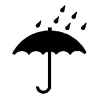 Keep dry |
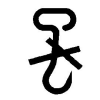 Use no hooks |
 Keep away from heat (solar radiation) |
Back to beginning
Transport
Symbols
 General cargo |
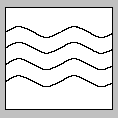
Liquid cargo (latex concentrates) |
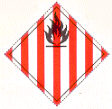 Fire hazard (flammable solids) Class 4.1 IMDG Code (applies to rubber scrap and residue) |
Means of transport
Ship, truck, railroad
Container transport
Standard containers should be used subject to compliance with limits for water content of goods and packaging. Ideal conditions would be provided by insulated containers or open-sided containers in well ventilated lower holds (protection from solar radiation and temperature variations).
Tank containers for rubber in liquid form.
Cargo handling
The cargo should not be handled if it is raining or snowing.
Stowage factor
| Pale crepe rubber in bales, unpacked 1.55 m3/t | |
| Pale crepe rubber in wooden crates 1.10 m3/t | |
| Pale crepe rubber in two-layer sacks 1.50 m3/t | |
| Ribbed smoked sheet rubber in bales 1.25 m3/t | |
| Standard Indonesian rubber block on flat pallet 1.31 m3/t |
Stowage space requirements
For maritime transport, natural rubber should preferably be stowed below deck. The holds/containers must be dry, clean and dust-free. Do not stow near heat sources.
Segregation
Fiber rope, thin fiber nets or markings are used for segregation purposes.
Cargo securing
Because of its considerable impact- and pressure-sensitivity, packages of this cargo must be secured in such a way that they are prevented from damaging each other. Spaces between packages or pallets must be filled, to prevent slippage or tipping. By selecting the correct packaging size or cargo unit (area module or area module multiple), holds can be tightly loaded (without spaces).
Back to beginning
Risk factors and loss prevention
RF Temperature
Natural rubber requires particular temperature, humidity/moisture and possibly ventilation conditions (SC VI) (storage climate conditions).
| Term | Temperature range | Source |
| Favorable travel temperature range | 5 – 25°C | [1] |
| Optimum travel temperature | 20°C | [1] |
Temperatures greater than 30°C and exposure to sunlight, even for periods of a few hours, result in activation of the rot-causing bacteria, especially in conjunction with moisture and proteins. In addition, oxidation and the associated molecular breakdown are encouraged, and the rubber develops soft patches, stickiness and becomes deformed (oxidized rubber).
If the destination is in a colder climate, the bales jam as a result of the drop in temperature and this makes the job of unloading the container or means of transport more difficult. Figures 9 and 10 illustrate the typical temperature conditions during a voyage from Singapore to Europe. In this case, the highest temperatures are recorded in the Gulf of Aden and in the Red Sea. Since the travel temperature of 30°C should not be exceeded (critical travel temperature), the containers should be stowed below deck where possible. The optimum travel temperature for rubber is 20°C. A temperature of 25°C should be maintained virtually constantly over a long period. This value was recorded as the upper travel temperature limit in Figures 6 and 7.
 Figure 9 |
 Figure 10 |
Rubber starts to melt at approx. 180°C.
The lower limit is 5 – 6°C, as there is a risk of hardening as a result of crystallization. This can cause difficulties unloading the container or means of transport because the jammed bales tear.
Latex concentrates also should be protected against extreme temperatures during transport and storage. If barrel loads are exposed to direct sunlight in tropical and subtropical climates, the high temperatures can result in a drop in quality.
At temperatures below 4°C, the latex concentrates tend to coagulate, which is an irreversible process. This results in difficulties when unloading, damage and additional costs. [74]
Back to beginning
RF Humidity/Moisture
Natural rubber requires particular temperature, humidity/moisture and possibly ventilation conditions (SC VI) (storage climate conditions).
| Term | Humidity/water content | Source |
| Relative humidity | 70…75 % | [1] |
| Water content | 1.08 % | [1] |
| Maximum equilibrium moisture content | 75% | [1] |
The water content of rubber is 1.08 %, and with its low water content, rubber thus belongs to water content class 1 (WCC 1)(water content classes).
Moisture due to rain, seawater or condensation water must be strictly avoided, as it can lead to rot, mold, mildew stains and discoloration. Rubber which has become wet and absorbed too much moisture is termed bleached rubber.
Natural rubber is not hygroscopic. The poor thermal conductivity of rubber may lead to condensation on the surface from capillary water, which in turn leads to mold and rot.
Since mold and mildew stains can occur in the middle of the cargo block, it is not possible to detect damage when the consignment is accepted. This can only be detected when the container or means of transport is unloaded.
Moisture damage is accompanied by unpleasant or penetrating odors.
In any instance of damage, the question must always be raised as to whether the rubber was damp from the start, i.e. is it a case of precarriage damage, which is the responsibility of the producer, or did the damage occur during transportation as a result of rain, condensation water or seawater (in the case of containers which are not watertight being loaded on deck). The microbiological product analysis as described by Professor Stantschew (see Moisture damage with natural rubber – German only) can be used to identify the time at which the moisture arose. Three aspects are taken into account:
| Observation of the stages of mold growth | |
| Temperature requirements of the mold | |
| Oxygen requirements of the microorganisms |
Back to beginning
RF Ventilation
Natural rubber requires particular temperature, humidity/moisture and possibly ventilation conditions (SC VI) (storage climate conditions).
If the rubber is dry for shipment or container dry, there is no need for ventilation.
Back to beginning
RF Biotic activity
Natural rubber displays 3rd order biotic activity.
It belongs to the class of goods in which respiration processes are suspended, but in which biochemical, microbial and other decomposition processes still proceed.
Back to beginning
RF Gases
Chemical decomposition and the evolution of gas during processing lead to cavities on or in the rubber sheets (blisters and bubbles). The inner surfaces of the blisters are often sticky, whereas those of the bubbles are dry and not sticky.
Back to beginning
RF Self-heating/Spontaneous combustion
Smoking must be prohibited when loading the containers and in the warehouses, as natural rubber is readily combustible due to its high hydrocarbon content. When natural rubber combusts, it generates considerable heat (temperatures up to 1,200°C) and smoke. A large quantity of gaseous products and unburned solid particles in the form of thick, black smoke are released, which make access to the seat of the fire more difficult. Burning rubber produces sputtering, burning drops of resin, which can cause the fire to spread.
Natural rubber scrap and residue is assigned to Class 4.1 of the IMDG Code (Flammable solids).
If there is a risk of fire, the firefighting personnel should wear automatic breathing apparatus and protective clothing.
Foam, CO2, dry chemicals or sprayed water can be used to extinguish the fire. [72]
Back to beginning
RF Odor
Bales of rubber emit a strong odor of rubber which can become a penetrating odor in the event of damage.
| Active behavior | Unpleasant smell, so do not stow in the vicinity of foodstuffs, semiluxury items and animal feedstuffs. Sour and foul odors: These are due to rotting rubber. |
| Passive behavior | Non-odor-sensitive. |
Back to beginning
RF Contamination
| Active behavior | None. |
| Passive behavior | Rubber is very sensitive to contamination. The thermoplastic properties of rubber mean that foreign bodies are absorbed either by penetration or sticking. Splinters become embedded in the rubber bales. This also applies to rubber packed in thin plywood crates. These can splinter even under low loads, and are hence also known as "dirty packing". Depending on the degree to which the contamination has penetrated, it can be removed by peeling. The warehouses and containers must be kept absolutely clean, as any contamination such as grass, pipe splinters, paper, textile scraps, graphite, coal, ore dust, cement, copper crumbs from cathode copper plates, sulfur, copper sulfate, and manganese residue will break down the rubber. This would cause holes to be formed during the production of rubber gloves, for instance. |
Back to beginning
RF Mechanical influences
Rubber should be stowed in such a way as to avoid the risk of crushing.
The fragile wooden crates can splinter even under normal load conditions. Holes in the rubber caused by wood splinters can adversely affect the value.
Strong rubber: Rubber which is resistant to deformation, i.e. resistant to tension and compression. Weak rubber: Ribbed smoked sheets which tear easily or part when sudden tension is applied.
Back to beginning
RF Toxicity/Hazards to health
This risk factor has no major influence on transportation of this product.
Back to beginning
RF Shrinkage/Shortage/Theft
It is recommended that loading and unloading should be supervised.
Back to beginning
RF Insect infestation/Diseases
When wooden packaging containers or cargo securing materials are used, it may, under certain circumstances, be necessary to comply with the quarantine regulations of the country of destination (Import regulations for packaging containers made from solid wood – IPPC standard) and a phytosanitary certificate may have to be enclosed with the shipping documents. Information may be obtained from the phytosanitary authorities of the countries concerned.
Back to beginning


